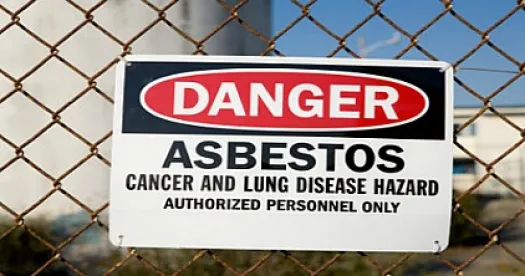Whether coverage for asbestos personal injuries is triggered under an injury-in-fact theory or under an exposure theory makes a world of difference to which insurance policies must respond to the asbestos losses. Asbestos, as we know, causes asbestos-related diseases that often manifest 20 or 30-years after the initial significant exposure to asbestos fibers. Most experts agree that the cellular and molecular damage that leads to these diseases is a continuous process. Which insurance policies must respond to cover the bodily injuries that result from that disease process is hotly debated.
In a recent decision by the Delaware Supreme Court, the court had to determine which, if any, of 35 excess insurance policies in a 14-year tower of insurance must respond to asbestos personal injury claims in a dispute that has been winding its way through the judicial system of multiple jurisdictions since 2005.
The decision in In re Viking Pump, Inc. and Warren Pumps, LLC Insurance Appeals, No. 518, 523, 525, 528, 2014, N10C-06-141, C.A. No. 1465-VCS (Del. Sup. Ct. Sept. 12, 2016), covers 83 pages of detail about the facts and the various issues raised on appeal. This post will focus on the trigger of coverage part of the decision, which begins at page 71 of the opinion. But if interested in asbestos coverage litigation, you should read the entire decision.
In its final judgment after the jury verdict in favor of the policyholder’s successors (another part of the opinion), the Delaware Superior Court stated, in part, as follows:
As to a person who ultimately develops lung cancer, mesothelioma or non-malignant asbestos-related disease, bodily injury first occurs, for policy purposes, upon cellular and molecular damage caused by asbestos inhalation, and such cellular and molecular damage occurs during each and every period of asbestos claimant’s significant exposure to asbestos.
On appeal, the policyholder argued the highlighted language meant that the excess policies were triggered not by injury during the policy period, but only by injury during the period of significant exposure to asbestos. In other words, an exposure trigger, rather than an injury-in-fact trigger. What was missing, contended the policyholder, was that bodily injury continued though disease diagnoses. Obviously, the continued disease process would implicate more policies.
The Supreme Court held that the Superior Court erred as to trigger of coverage for the excess policies. The court concluded that the final judgment should add the following words to the sentence above: “and continues thereafter.” The court noted that the parties agreed that under New York law, which applied to the excess policies, a policy is triggered if the claimant suffered some injury in fact during the policy period. According to the court, the parties had agreed that bodily injury would continue until diagnoses, which is why all the jury had to do was resolve when bodily injury first occurred. The only issue of fact was when bodily injury first occurs, because both sides’ experts testified that a person who ultimately develops asbestosis has undergone a continuous process from a person’s first significant exposure to asbestos that continued until diagnosis.
What the court sought to avoid was altering the jury’s finding that bodily injury first occurs upon a claimant’s significant exposure to asbestos into a finding that bodily injury only occurred during a claimant’s significant exposure to asbestos. Accordingly, the court found that the Superior Court’s application of an exposure trigger was inconsistent with New York law. The court made it clear that it was not applying a continuous trigger, but was applying New York’s operative injury-in-fact trigger based on the testimony that cellular and molecular damage leading to asbestos-related disease is a continuous process that is triggered after there is an injury-in-fact — the claimant’s first significant exposure to asbestos.




 />i
/>i

